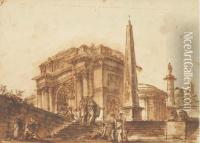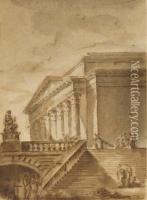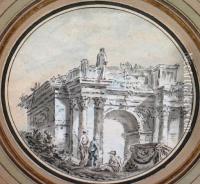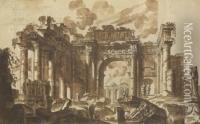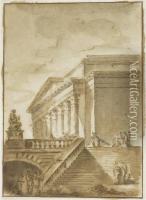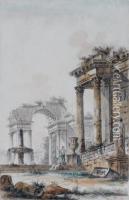Juste Nathan Boucher Paintings
Juste Nathan Boucher was a French painter whose life and work were situated in the 18th century, a period marked by the Rococo style that was prevalent in France at the time. Born in 1736, Boucher was part of a cultural movement that celebrated ornate decoration, pastel colors, and graceful, playful themes. While there is no extensive documentation about his life, it is known that he was active during a vibrant period in French art history. His contributions would have been influenced by the larger artistic movements of his time, and he would have been contemporaneous with other French artists such as François Boucher (no relation), who was a defining figure of the Rococo movement.
Juste Nathan Boucher's career would have unfolded against the backdrop of the reign of Louis XV and the beginning of Louis XVI's rule, times when the French aristocracy and bourgeoisie had a great appetite for art that displayed the lightheartedness and frivolity characteristic of Rococo. Boucher's works, like those of his contemporaries, would have catered to the tastes of his patrons, often depicting scenes of leisure, mythological themes, and romanticized landscapes. His style would likely reflect the influence of the more prominent Boucher, as well as other artists such as Watteau and Fragonard.
Unfortunately, not much specific information about Juste Nathan Boucher's individual works or his impact on the art world has survived, which is not uncommon for lesser-known artists of the period. The details of his training, the major commissions he may have received, and his overall influence on the art of his time are lost to history. He died relatively young in 1782, before the French Revolution, which would dramatically change the political and cultural landscape of France. Juste Nathan Boucher's legacy, as with many artists of his era, would be overshadowed by the tumultuous events that followed and by the more renowned artists whose works have been more thoroughly documented and preserved.
